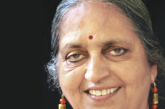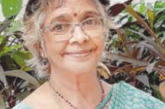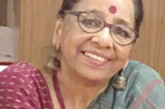
In many ways, the story of Indian Women’s Press Corps is also the story of the changing face of journalism and indeed of India and its demographic profile.
Twenty five years back when the IWPC was established–amidst some protests and a lot of skepticism—-as a national all-women journalists’ forum, India was in a churn. The country was changing rapidly and dramatically—politically, socially, economically and even culturally—as it tried to grapple with the aftershocks of the mandal and mandir agitations and the demolition of the Babri Masjid, the opening up of the economy or the emergence of minority/ coalition regimes which sought to build a common agenda to try and steer the nation through choppy waters. There was so much happening all around that would continue to impact people for years to come.
Like the country, journalism and journalists too were dealing with new tendencies and trends. The media industry was expanding. Newspapers were setting up multiple editions. Their ownership patterns and objectives were changing. The number of language papers was growing. Private television channels were slowly coming up, bringing with them new tools for gathering, editing and transmitting news and information. The nature, form and content of packaging news, disseminating information or hiring rules were slowly being overhauled.
And in keeping with the country’s changing demography, the media industry became the new hunting ground of the young, enterprising, energetic and ambitious youngsters, including females. There was a spurt of bright-eyed women who entered the profession to chase their dreams, take on different roles and earn their place under the sun in an otherwise male-dominated milieu. Often asked to cover education, environment, information and broadcasting, so patronizingly reserved for her, it took a woman’s sensitivity and commitment to her job —Usha Rai is an inspiring example of this —to turn these so-called “soft’’ domains into prime, vibrant and impactful beats that her male colleagues soon began to eye.
There was no story that a woman journalist did not want to be a part of—whether it was to cover “hard’’ beats like parties across the political spectrum, foreign relations, defence, economic affairs or, for that matter, conflicts, wars and terror strikes. She came, she saw and, though it took some time, she conquered and won the day to bring inclusivity in apportioning beats no matter what it related to. It was a fight but worth fighting for.
As their numbers grew, women journalists’ yearned for a space of their own outside their offices to interact with each other, share their thoughts and problems, hone their professional skills and build their careers. Out of this emerged the idea of the Indian Women’s Press Corps which took shape in 1994.
In the last 25 years, the IWPC has moved with the times and grown into a robust organization that provides a platform to women journalists across different medias, languages and regions and helps them forge a bond so that there are there for each other in times of happiness or distress. After all, home is where the heart is—and the IWPC is home to its members.
As the organisation gears up to tackle new challenges and explore fresh avenues and vistas, it remains faithful to its core objective: to equip and empower women scribes professionally so that each one of them can hold her own in the highly competitive environs.
There is a library, a work station and a well-stocked kitchen famed for its home-like food. There are interactions with politicians, policy makers, experts, artists, activists and those whose voices are otherwise not heard. It’s a boon, in particular, for young freelancers, fresh entrants to the profession or scribes who work on the desk and often do not have the access to such personalities that editors, correspondents, senior freelancers or PIB or Parliament card holders do. Members are exposed to all shades of opinions and ideologies—left, right, centre and everything in-between. If there is a Mohan Bhagwat of the RSS, there is also the CPM’s Prakash Karat, senior diplomat Shiv Shankar Menon or author Arundhati Roy to fill the canvas for her. And for those who want a breather from the games that are played in the corridors of power, there are sports events and a host of other activities as well.
The IWPC has matured gracefully over these 25 years but in keeping with the country’s demography, it is getting younger by the day as new blood brings new energy with it. This is evident as soon as one walks through the gate. The place is abuzz with young chatter, intense discussions and heated debates and though there may be sharp differences of opinions, there is this overarching and unifying factor: that each member wants the best for the organisation whose moral fibre and credibility has been strengthened by successive teams.
It is because the foundations of the IWPC are so strong now that there is hope that it will play a greater role in deepening the national consciousness on issues like attacks on journalism and press freedom, gender disparities in the profession, giving space to those who are fighting to be heard or helping members and colleagues deal with transformations taking place in the media industry.




